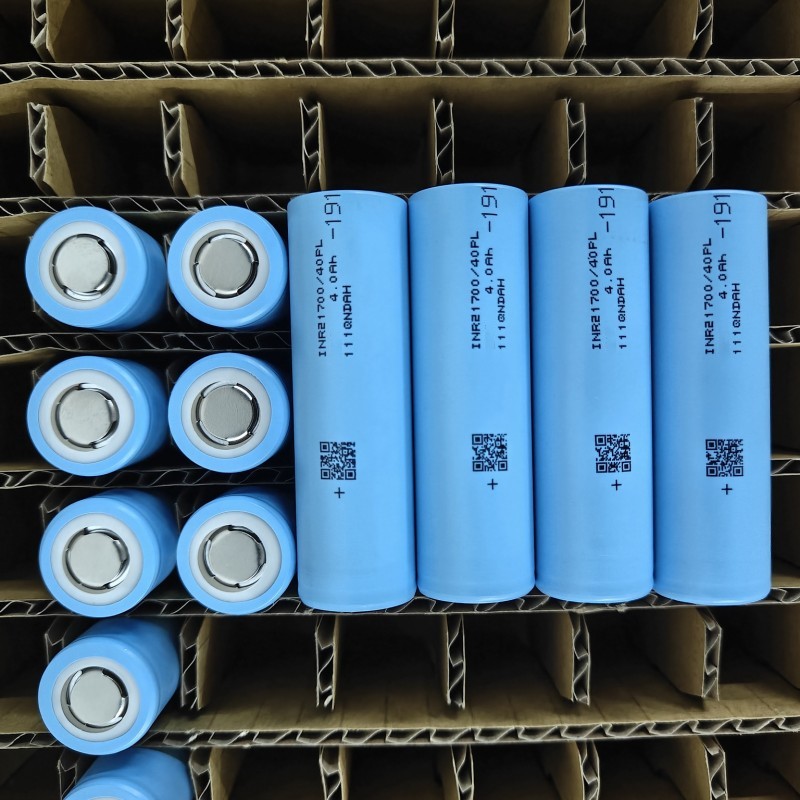Ensuring the safety of lithium-ion power batteries is the primary prerequisite for developing electric vehicles and energy storage systems. The conventional method relies on temperature parameters and only qualitatively assesses the state of safety (SOS), which reduces the warning time of the battery management system (BMS). Here we present a thermal runaway warning method based on SOS. Specifically, we analyze the strain evolution trend of thermal runaway under different abuse conditions and propose the strain trigger point for thermal runaway. Furthermore, multidimensional parameters such as temperature rise, median voltage, capacity, power, and strain are used to quantify the SOS. The SOS is a battery state parameter, with its value ranging from 0% to 100%. Experimental results demonstrate that the presented approach can warn of thermal runaway around 5 h in advance.
The development of new energy vehicles is an important step towards carbon neutrality. Lithium-ion batteries have become the dominant energy storage solution for electric vehicles owing to their superior energy density and long cycle life. However, the fires, explosions, and other safety incidents of batteries are frequent. The investigation report shows that thermal runaway is the main cause of battery safety accidents. Obviously, the issue of thermal runaway has seriously hindered the further promotion and large-scale application of electric vehicles. Therefore, solutions to this problem are urgently required to pass the last mile for early warning of thermal runaway.
Mechanical, electrical, or thermal abuse can induce thermal runaway, a phenomenon involving an exothermic chain reaction within a cell. This reaction causes a temperature increase of thousands of degrees, ultimately leading to spontaneous combustion11. In the early stage of thermal runaway, the electric and thermal behavior of the battery remains unchanged, which has strong concealment. In the final stage, the battery may experience an exothermic chain reaction, leading to a rapid temperature rise and eventual explosion. Clearly, the thermal runaway has a strong suddenness14. Consequently, it is a challenging issue for early warning of battery thermal runaway.
Currently, the study of the thermal runaway evolution mechanism under different induced conditions has attracted the attention of a wide range of scholars. Mechanical external forces can cause destructive deformation and generate flammable electrolytes, which lead to spontaneous combustion of the battery. Thermal runaway triggered by nail penetration occurs faster than indentation loads. This causes a surge in heat generation and the development of severe internal short circuits. Over-charging can accelerate the lithium precipitation reaction and solid electrolyte interface membrane decomposition, which increases the risk of thermal runaway. The heat accumulated within the battery cannot be dissipated, leading to a rise in temperature and a cascade of chain reactions. Research has demonstrated that the higher the heating temperature of the battery, the shorter the time required to trigger thermal runaway. However, existing thermal runaway mechanism analysis methods based on temperature cannot describe mechanical behaviors such as material deformation, cracking, etc. Meanwhile, this method cannot capture the local effects and nonlinear behaviors of the battery.
Existing thermal runaway warning techniques are mainly based on gas, sound, electrical, and thermal signals. Gas sensors can detect gas leakage from the battery and issue an early warning signal. Gas chromatography and Fourier-transform infrared spectroscopy enable the detection of organic vapor composition and concentration during the initial stages of battery thermal runaway. It was reported that the concentration of CO, CO2, and CH4 can warn of the overheating and over-charge thermal runaway of 18650 type battery. Further, H2 was captured to detect the growth of lithium dendrites and warn of thermal runaway. It is derived from the redox reactions of the electrolyte or solid electrolyte interface (SEI) under high temperature conditions. Unfortunately, no volatilized gas is present to serve as an early warning signal for thermal runaway under normal operating conditions. Meanwhile, as the gas accumulates inside the battery, the opening of the safety valve or the rupture pouch can emit a shrill acoustic signal. It is evident that artificial intelligence algorithms based on acoustic signals provide early warning of thermal runaway. However, acoustic signals are susceptible to interference from ambient noise, posing a challenge for the accurate warning of thermal runaway.
The electrical and thermal parameters of the battery are important indicators for early warning of thermal runaway. The BMS can issue an alarm signal if the predicted external temperature or voltage deviates from the threshold based on models or intelligent algorithms. However, the heat generated by internal reactions cannot be rapidly transferred to the surface, making it difficult for external parameters to accurately reflect internal structural damage. Consequently, thermal runaway warning systems based on external parameters experience delays. Fortunately, fiber optic sensors can measure battery internal parameters such as stress and core temperature, which are considered an ideal solution for thermal runaway warning. However, the implantation of fiber optic sensors has the following issues: (1) this raises the cost of the battery, which is unacceptable to users. (2) It deteriorates the battery structure, posing a risk to its safety. (3) It is difficult to precisely parse the coupled multi-signal.
European Council for Automotive Research and Development has established an eight-stage battery safety evaluation scheme, where higher stages denote greater risk40. A multi-level safety assessment model for batteries was proposed to achieve the thermal runaway risk evolution hierarchica. In conclusion, the existing methods can only qualitatively assess the SOS, which leads to a short warning time for thermal runaway. Here, we analyze the strain evolution law during thermal runaway and propose the thermal runaway trigger strain point. Further, a battery evaluation indicator-SOS is quantified to warn of thermal runaway. More importantly, the effectiveness of the presented approach is verified under three operating conditions. The experimental results indicated that this method can accurately warn the thermal runaway.
